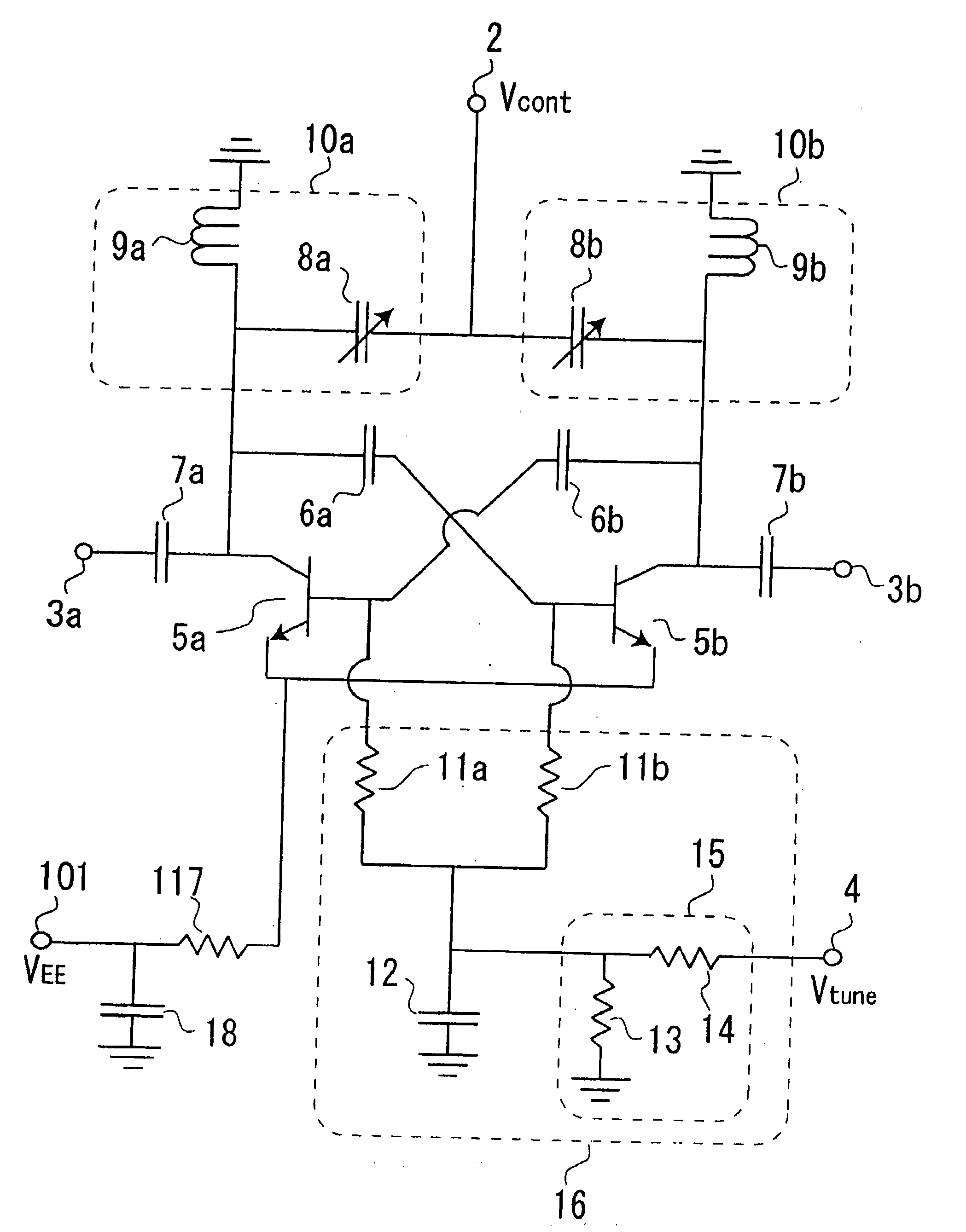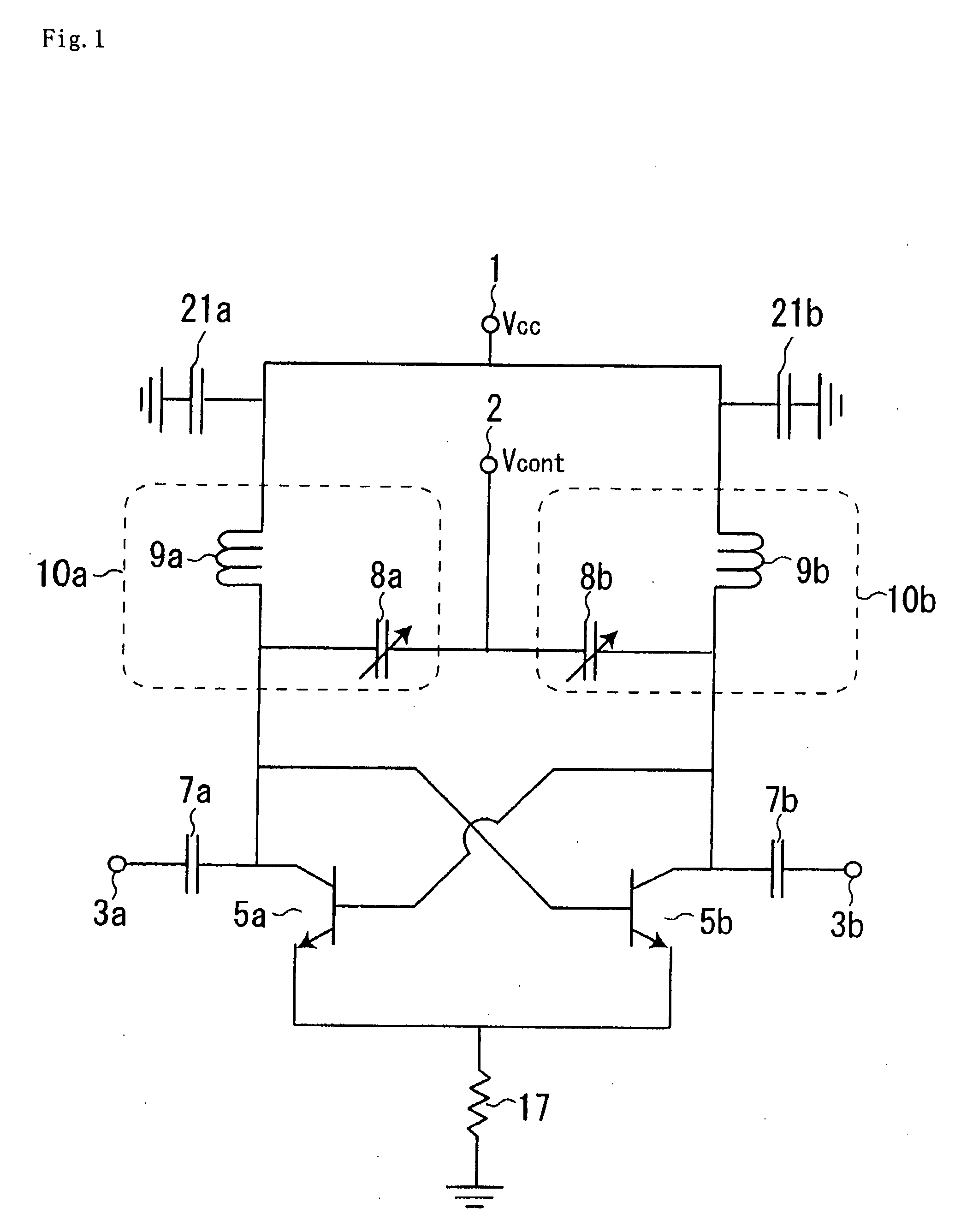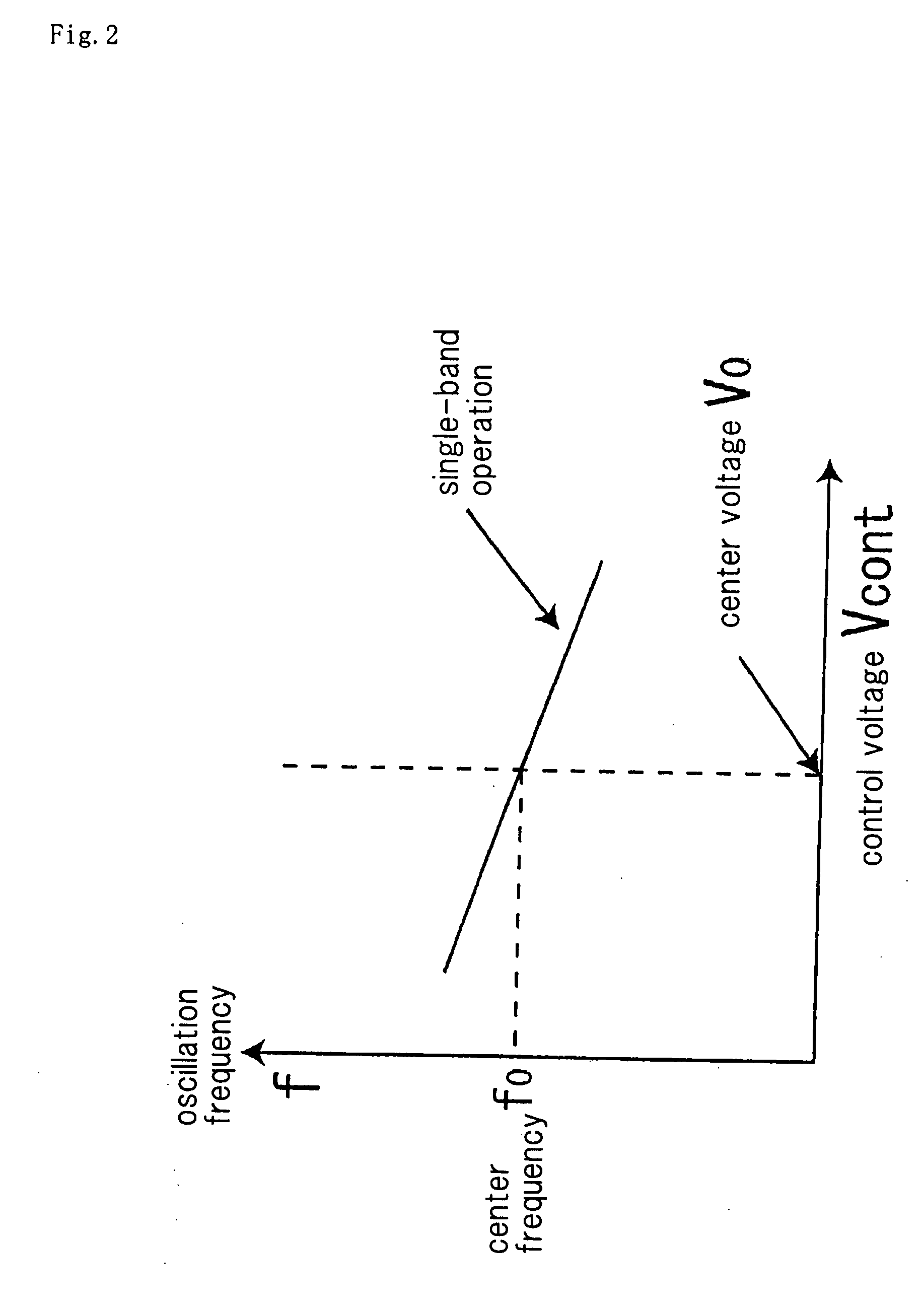Voltage Controlled Oscillator and Frequency Control Method of the Voltage Controlled Oscillator
a voltage control and oscillator technology, applied in the direction of oscillation generators, resonance circuit tuning, modulation, etc., can solve the problems of circuit complexity, cross-coupled voltage control oscillators cannot perform multi-band operation, and cannot operate at a plurality of bit rates
- Summary
- Abstract
- Description
- Claims
- Application Information
AI Technical Summary
Benefits of technology
Problems solved by technology
Method used
Image
Examples
first exemplary embodiment
[0055]FIG. 10 is a circuit diagram illustrating a configuration of a cross-coupled voltage controlled oscillator according to a first exemplary embodiment.
[0056]Referring to FIG. 10, the cross-coupled voltage controlled oscillator of this exemplary embodiment includes power supply terminal 101 to which negative power supply voltage VEE is supplied, control terminal 2 to which control voltage Vcont for controlling an oscillation frequency is supplied, output terminals 3a, 3b for outputting a signal having the oscillation frequency variably controlled, cross-coupled transistors 5a, 5b whose collector terminals and base terminals are connected to each other in a cross-coupled arrangement, direct current blocking capacitances 6a, 6b, 7a, 7b for blocking a direct current, LC tanks 10a, 10b as a resonant circuit, resistor 117 for connecting emitter terminals of cross-coupled transistors 5a, 5b to power supply terminal 101, grounding capacitance 18 for grounding power supply terminal 101 a...
second exemplary embodiment
[0070]FIG. 11 is a circuit diagram illustrating a configuration of a cross-coupled voltage controlled oscillator according to a second exemplary embodiment. In addition, in FIG. 11, the same part as in the first exemplary embodiment shown in FIG. 10 is denoted by the same symbol.
[0071]Referring to FIG. 11, the cross-coupled voltage controlled oscillator of the exemplary embodiment has inductors 9a, 9b of the cross-coupled voltage controlled oscillator shown in FIG. 10 replaced with transmission lines 19a, 19b. In a very high frequency band in which it is difficult for a spiral inductor etc. to be formed accurately, a method by which an inductor component is formed of a transmission line in such way is suitable.
[0072]Now, operation of the cross-coupled voltage controlled oscillator of this exemplary embodiment will be hereinafter described using the simulation result. In the simulation, assuming that the cross-coupled voltage controlled oscillator of the exemplary embodiment is appli...
third exemplary embodiment
[0080]FIG. 15 is a circuit diagram illustrating a configuration of a cross-coupled voltage controlled oscillator according to a third exemplary embodiment. In addition, in FIG. 15, the same part as in the first exemplary embodiment shown in FIG. 10 is denoted by the same symbol.
[0081]Referring to FIG. 15, the cross-coupled voltage controlled oscillator of this exemplary embodiment has resistors 11a, 11b of the cross-coupled voltage controlled oscillator shown in FIG. 10 replaced with transmission lines 20a, 20b. Here, transmission lines 20a, 20b have an electric length of a ¼ wavelength at any frequency within a predetermined oscillation frequency range and desirably, they have the electric length of a ¼ wavelength at the center frequency within a predetermined output frequency range. Such configuration may avoid use of a resistor with a large value, and may sometime bring an advantage in phase noise or a change in power supply voltage at the power supply terminal.
PUM
 Login to View More
Login to View More Abstract
Description
Claims
Application Information
 Login to View More
Login to View More - R&D
- Intellectual Property
- Life Sciences
- Materials
- Tech Scout
- Unparalleled Data Quality
- Higher Quality Content
- 60% Fewer Hallucinations
Browse by: Latest US Patents, China's latest patents, Technical Efficacy Thesaurus, Application Domain, Technology Topic, Popular Technical Reports.
© 2025 PatSnap. All rights reserved.Legal|Privacy policy|Modern Slavery Act Transparency Statement|Sitemap|About US| Contact US: help@patsnap.com



